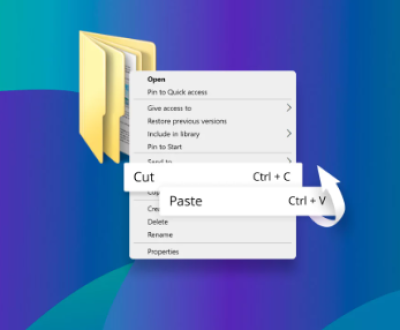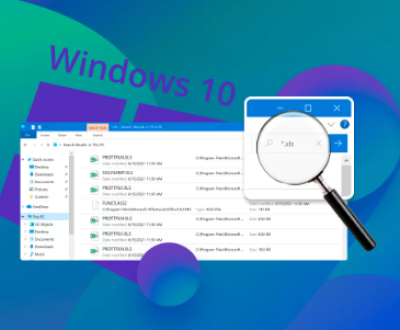Data loss from a hard disk can be a stressful and overwhelming experience. Whether it’s caused by accidental deletion, hardware failure, or corruption, losing important files can have serious consequences, both personally and professionally. Luckily, hard disk data recovery services exist to help retrieve lost data. However, one of the primary considerations when seeking help is the cost of recovery services.
1. What is Hard Disk Data Recovery?
Hard disk data recovery refers to the process of salvaging or restoring data from a damaged or corrupted hard drive. When a hard disk fails, whether due to physical damage (such as a mechanical failure) or logical errors (like file system corruption), data recovery professionals can often recover the data using specialized tools and techniques.

2. Factors Influencing Data Recovery Charges
Several factors influence the cost of data recovery services. These factors help recovery professionals determine the level of effort, time, and technology required to retrieve your data.
a. Type of Failure
One of the primary determinants of recovery charges is the type of failure your hard disk has experienced. The failure can be broadly categorized into two types: physical and logical.
Physical Failures: These occur when there is damage to the hardware components of the hard drive, such as the motor, read/write heads, platters, or other internal components. These types of failures require sophisticated hardware repairs and are often more expensive to recover.
Examples of Physical Failures:
Motor failure
Read/write head failure
Disk platter damage
Electronic component failure
Logical Failures: These failures occur when the data on the hard drive is corrupted or deleted, but the physical hardware is still intact. Logical failures often result from issues such as file system corruption, accidental deletion, malware, or partition errors. Recovery from logical failures is typically less expensive compared to physical failures.
Examples of Logical Failures:
Accidental file deletion
Partition loss
Corruption due to malware or virus attacks
Software errors
b. Severity of Damage
The severity of the damage to the hard drive also impacts the cost. If the damage is minimal and there is a higher likelihood of successful recovery, the cost will typically be lower. However, severe damage—such as a failed motor, scratched platters, or completely dead hard drive—requires extensive repairs, making the recovery process more complex and costly.
c. Drive Type
The type of hard disk also plays a role in determining the cost of recovery. Traditional hard disk drives (HDDs), solid-state drives (SSDs), and hybrid drives (SSHDs) each have different recovery procedures and technologies involved.
HDDs: HDDs are mechanical drives, and recovery from physical damage may involve disassembling the drive in a cleanroom environment. However, since HDDs have been around longer, there are more tools available to recover data, and the cost tends to be more predictable.
SSDs: SSDs use flash memory instead of mechanical components. Because of their different architecture, SSD data recovery can be more complex, especially when there is wear or failure in the flash memory cells. Recovery from SSDs tends to be more expensive than HDD recovery, especially when dealing with physical damage.
Hybrid Drives (SSHDs): Hybrid drives combine elements of both SSDs and HDDs. These drives require a combination of techniques for data recovery and may cost more than standard HDD recovery but less than SSD recovery.
d. Size of the Drive
The storage capacity of the drive can also impact the recovery cost. Larger drives may require more time and effort to scan, and the amount of data that needs to be recovered can also influence pricing. In general, the larger the drive, the more expensive the recovery due to the additional time needed for recovery.
e. Turnaround Time
Data recovery services often provide different pricing tiers based on the speed of recovery. If you need your data recovered urgently, such as within 24-48 hours, you may be charged a premium for expedited services. Standard recovery services, which can take several days or weeks, tend to be more affordable.
f. Service Provider
The cost of data recovery services can vary greatly depending on the provider you choose. Well-established recovery companies with a proven track record may charge higher prices, as they typically offer more advanced technologies and specialized cleanroom environments. Smaller, independent recovery shops may offer lower prices, but the quality of service may not be as consistent.
3. Types of Data Recovery Services and Their Costs
Now that we’ve covered the factors influencing the charges, let’s take a look at the different types of data recovery services and the typical price ranges associated with each.
a. Basic Recovery (Logical Failures)
For drives that experience logical issues (such as deleted files, lost partitions, or corrupted file systems), recovery services are generally less expensive. In these cases, the data recovery professional may only need to run software-based recovery tools to restore lost files.
Price Range: $100 to $500
Time Frame: A few hours to a few days
b. Advanced Recovery (Physical Failures)
When dealing with physical damage to the hard drive, such as a failed read/write head or damaged motor, advanced recovery services are required. These services often involve disassembling the hard drive in a cleanroom and using specialized equipment to recover the data.
Price Range: $500 to $3.000
Time Frame: A few days to several weeks
c. SSD Data Recovery
Data recovery from SSDs can be more expensive than from traditional HDDs due to the complexity of the technology. SSD recovery requires highly specialized knowledge and tools, especially when dealing with damaged flash memory cells. The cost can vary depending on whether the SSD is damaged physically or logically.
Price Range: $600 to $3.500
Time Frame: A few days to several weeks
d. RAID Data Recovery
RAID (Redundant Array of Independent Disks) recovery is another specialized service, often required when dealing with multi-disk RAID arrays. The cost can vary significantly based on the number of disks involved, the type of RAID configuration (RAID 0. RAID 1. RAID 5. etc.), and the complexity of the failure.
Price Range: $1.000 to $10.000+
Time Frame: A few days to several weeks
4. Do-It-Yourself Data Recovery
In some cases, users may attempt DIY data recovery before turning to professional services. While there are many software tools available that promise to recover lost data, it’s important to understand the limitations and risks. DIY tools may work for simple cases of file deletion or corruption, but they are generally not effective for physical failures, and they can even make the problem worse in some cases. If the data is valuable, it’s often worth investing in professional services rather than attempting a DIY recovery that might be unsuccessful.
5. What to Expect During the Recovery Process
When you approach a data recovery service, the process typically follows several stages:
Initial Evaluation: The recovery company will assess the drive to determine the type of failure and the likelihood of success. Some companies offer free evaluations, while others may charge a nominal fee.
Diagnostic Report: After evaluating your drive, the company will provide you with a diagnostic report outlining the extent of the damage and the estimated recovery cost.
Recovery Process: Once you approve the diagnostic report, the recovery process will begin. Depending on the type of failure, this can involve software-based recovery or hardware-level repairs.
Data Transfer: After the data is recovered, it will be transferred to a new storage device. You will be able to verify the data before finalizing the recovery process.
Final Payment: Once the data is successfully recovered, you’ll be required to make the final payment based on the quoted pricing.
6. How to Minimize Data Recovery Costs
While data recovery charges can be expensive, there are steps you can take to minimize costs:
Act Quickly: The sooner you seek recovery, the more likely it is that your data can be retrieved without further damage.
Avoid DIY Attempts: DIY recovery tools can worsen the problem, leading to higher recovery costs later.
Use Reliable Backup Solutions: Prevent future data loss by regularly backing up your data to cloud storage, external hard drives, or network storage.
About us and this blog
Panda Assistant is built on the latest data recovery algorithms, ensuring that no file is too damaged, too lost, or too corrupted to be recovered.
Request a free quote
We believe that data recovery shouldn’t be a daunting task. That’s why we’ve designed Panda Assistant to be as easy to use as it is powerful. With a few clicks, you can initiate a scan, preview recoverable files, and restore your data all within a matter of minutes.
Subscribe to our newsletter!
More from our blog
See all postsRecent Posts
- How to restore lost files on sd card 2025-07-03
- How to restore lost files 2025-07-03
- How to restore lost word document 2025-07-03

 Try lt Free
Try lt Free Recovery success rate of up to
Recovery success rate of up to









